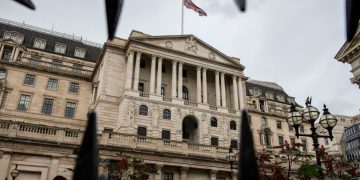The strain of cost-of-living extends beyond mere financial discomfort. Many employees are grappling with depression and feelings of isolation, too, with 37% feeling physically tired and struggling with low energy, 21% feeling depressed, and 18% feeling socially withdrawn. Perhaps most concerning, UK workers are compelled to make decisions that could impact their health, with 45% stating they are limiting or turning off their heating and 39% admitting to eating less or opting for less healthy food choices to manage their finances. The Consumer Price Index and inflation can detect cost of living pressures. The present article discusses the various dimensions of these pressures.
Consumer Price Index and Cost of living pressures
The primary inflation measure used is the Consumer Price Index (CPI). One reason the CPI fell to 3.4% in February was a growth in petrol and diesel costs, which offset a decline in food price inflation. The Bank of England also believes in “core inflation” when making decisions about interest rates. This excludes the cost of energy, food, alcohol, and tobacco—which can often change—to get a closer picture of price rises.
Core inflation was 4.5% in February. Soaring food and energy bills were the top causes of the UK’s current high inflation and cost of living pressures. Oil and gas were in greater demand after the COVID-19 pandemic. Similarly, expenses surged again when Russia plagued Ukraine, missing global supplies. The conflict also decreased the amount of grain for sale, pushing up food prices.
Inflation and wage increase in the UK
Inflation soared to 11.1% in October 2022, the highest rate for 40 years. The rate has dropped significantly since then. However, lower inflation doesn’t mean prices drop – they grow less quickly. The Bank of England’s target is to hold inflation at 2%. While inflation stayed several times that level, the Bank raised interest rates to 5.25%.
The theory is that if you make borrowing more expensive, people have less money to spend. They may also decide to keep more as saving rates increase. In turn, this decreases demand for goods and delays price rises. But it’s a balancing act – raising borrowing costs risks damaging the economy. Official figures demonstrate that wage growth is increasing faster than rising prices, but pay is falling as quickly as it was.
Pay, excluding bonuses, rose by 6.2% in the last three months of 2023 compared to the same period a year before. After considering inflation, this means pays went up by 1.9%. Several industries, including rail, healthcare, and education, have moved on strike over pay. The government has claimed that necessary pay rises could increase inflation because businesses might raise prices.
The cost of living has risen in the UK and worldwide since 2022.
Food and energy prices rose markedly, particularly gas prices, partly in response to the conflict in Ukraine. Global recovery from the coronavirus (COVID-19) pandemic put further pressure on prices. In the year to January 2024, the annual CPIH inflation rate was 4.2%, unchanged from the previous two months.
Average UK house prices are estimated to have fallen 1.4% since December 2023 (provisional estimate). This is up from a decrease of 2.3% in the 12 months to November 2023 (revised estimate). Private rental prices continued to grow at a record high rate in the UK, rising by 6.2% (provisional estimate) in the year to January 2024, unchanged for the second consecutive month. This remains the highest annual percentage change since this UK data series began in January 2016.
Food prices have experienced the highest rise.
According to the latest Consumer Price Index, including owner-occupiers’ housing costs (CPIH), prices of food and non-alcoholic beverages rose by 7.0% in the year to January 2024. This was the tenth consecutive month of falls in food and non-alcoholic beverage inflation, down from 8.0% in December and a recent high of 19.2% in March 2023, the highest annual rate seen for over 45 years.
The cost of living also affects health.
New research has analyzed how cost of living pressures are influencing the workforce. The findings show that three-quarters of HR leaders worry that the cost of living crisis affects employee performance. In the survey of 500 UK HR Directors conducted by Nous.co, a third (34 percent) of HR leaders expressed a decline in productivity due to employees having other things on their minds, and three quarters (74 percent) stated that financial pressures instantly affected employee performance.
The chief executive of Mental Health UK echoed these matters last week, alerting that financial pressure was one of several factors fuelling stress, pressure, and burnout in the workforce. The findings come from the cost of living data published by the ONS, which recently caught an inflation incline of 4 percent. Core inflation remains fixed at 4.2 percent, with around 4 in 10 energy bill payers struggling to afford costs and a third finding it challenging to settle their rent or mortgage.
What Surveys say?
According to the survey, two in five HR leaders think employees are doing additional ‘life admin’ on company time, mainly due to current cost-of-living pressures. When asked what changes they’d detected in their workforce since the cost-of-living crisis began, 40 percent of respondents affirmed that they believed employees were doing extra life admin.
For example, they were attempting to find more affordable energy tariffs or speaking to mortgage lenders – during the working day. A fifth of respondents (18 percent) acknowledged that employees at their companies had taken annual leave to handle their bills due to raised pressure on household finances.
Workers are worried about their finances.
The study, led by Censuswide, paints a sobering view of how cost-of-living efforts affect workers. Almost half of respondents (46%) report worrying about their finances daily in response to the challenges introduced by rising living costs, and a fifth (18 percent) of HR leaders surveyed declared their organization had presented employees additional time off to help them through the cost-of-living crisis.
A quarter (26 percent) delivered workplace counseling services to staff, and just under a third (30 percent) offered financial programs to attack cost-of-living challenges directly. More than half (56 percent) of the HR leaders requested raised salaries to support workers, and 2 in 5 (38 percent) had given workers one-off support payments.





























